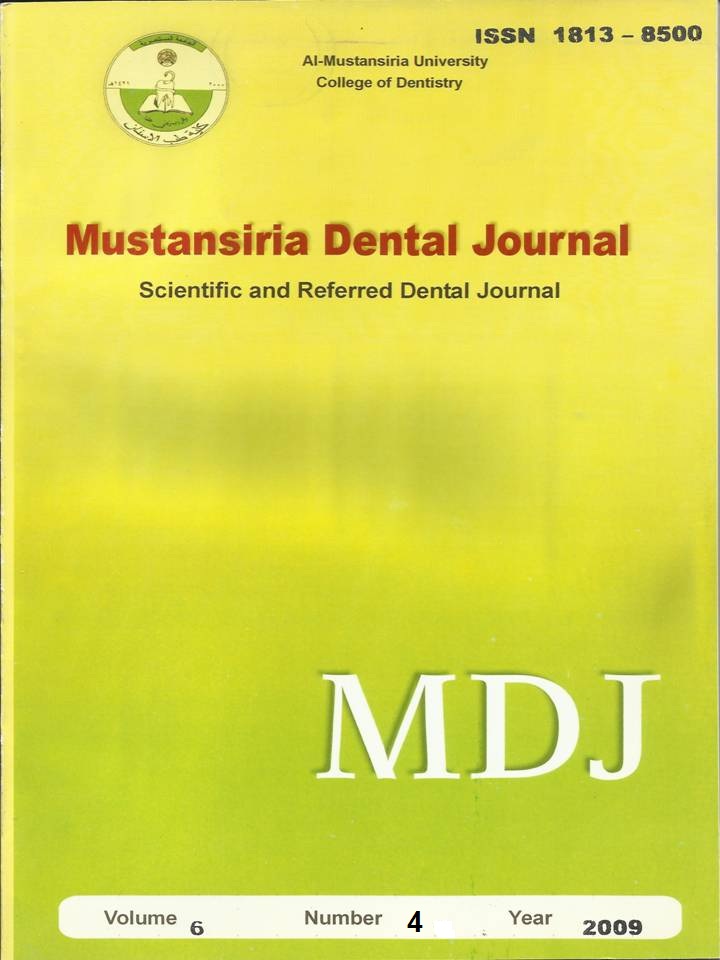The Effect of Modified Carisolv Gel on Surface Roughness of two Different Types of Ceramic Materials Using Light Polarizing Microscope
DOI:
https://doi.org/10.32828/mdj.v6i4.480Keywords:
Key words: Carisolv, Ceramic, Surface roughness, light polarizing microscoAbstract
This in vitro study evaluated the influence of chemomechanical caries removal solution on the surface topography of metal-ceramic feldspar porcelain (MAJOR ceramic) and All-ceramic feldspar porcelain (Vita Alpha) using light polarizing microscope. Forty specimens of MAJOR ceramic and forty specimens of Vita Alpha ceramic of (12mm diameter & 3mm height) were prepared .All specimens were polished with silicon polishing burs, cleaned, autoglazed and stored in 37°C before exposure to Carisolv. Thirty specimens of each material randomly exposed to Carisolv gel for 5, 10 and 20 minutes respectively, other ten specimens were not, to act as control group. All specimens were subjected to surface roughness test by profilometer and evaluated using light polarizing microscope. ANOVA and student t-test were used to analyze the surface roughness values.
Different exposure times of modified Carisolv gel showed highly significant difference compared to control (P<0.001).Surface treatment with modified Carisolv gel for 20 minutes resulted in the highest surface roughness. Metal-ceramic feldspar porcelain (MAJOR ceramic) showed high surface roughness than all ceramic feldspar porcelain (Vita Alpha), however, the difference is statistically not significant (P>0.05).
Different exposure times of modified Carisolv gel affect the surface roughness of dental ceramic materials differently. This study showed major influence on surface topography after exposure to modified Carisolv gel for 20 minutes on dental ceramics MAJOR and Vita Alpha.
Downloads
Published
Issue
Section
License
The Journal of Mustansiria Dental Journal is an open-access journal that all contents are free of charge. Articles of this journal are licensed under the terms of the Creative Commons Attribution International Public License CC-BY 4.0 (https://creativecommons.org/licenses/by/4.0/legalcode) that licensees are unrestrictly allowed to search, download, share, distribute, print, or link to the full texts of the articles, crawl them for indexing and reproduce any medium of the articles provided that they give the author(s) proper credits (citation). The journal allows the author(s) to retain the copyright of their published article.
Creative Commons-Attribution (BY)









